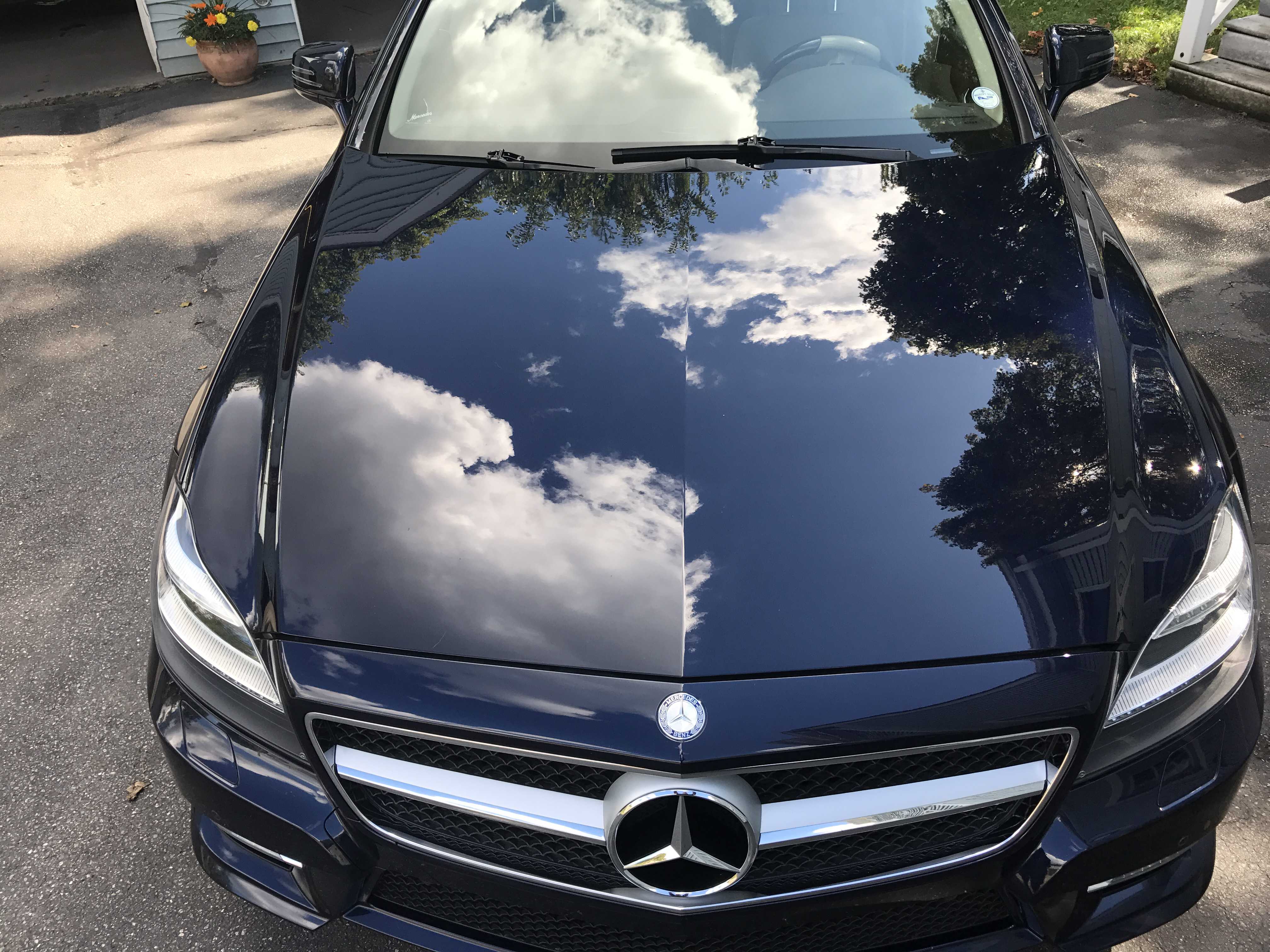How Ceramic Coating Newark can defend your vehicle from UV rays
Wiki Article
Exploring the Scientific Research Behind Car Ceramic Coating and Its Protective Features
The science of car ceramic coating offers an interesting study in advanced automobile security. Made up primarily of silicon dioxide and polymers, these coatings develop a durable bond with car paint. This interaction improves resilience against environmental threats while using hydrophobic advantages. The ins and outs of just how these layers work and their lasting advantages continue to be much less comprehended. Ceramic Coating Newark. Unboxing these information exposes why ceramic finishes are ending up being a recommended option for car careWhat Is Ceramic Coating?
Ceramic coating is a fluid polymer that chemically bonds to the surface area of a lorry's paint. This innovative protective layer enhances durability and uses superior resistance to ecological variables. Unlike standard wax or sealers, which provide short-lived security, ceramic coatings develop a lasting guard that can stand up to rough problems such as UV rays, acidic impurities, and severe climate. When used properly, the coating develops a hydrophobic surface area, triggering water to bead and slide off, which assists in maintaining the automobile's cleanliness. Additionally, it uses improved gloss and deepness to the paint, making the lorry appear more sleek and dynamic. The application process generally includes thorough surface prep work, including cleaning and sprucing up, to guarantee peak bonding. Therefore, ceramic finishings are ending up being increasingly preferred amongst car fanatics and those seeking to protect their financial investments, promising to keep the vehicle's visual charm while lowering the regularity of upkeep.The Structure of Ceramic Coatings
The detailed solution of ceramic finishings largely contains silicon dioxide (SiO2), which is originated from natural sources like quartz and sand. This vital element supplies the foundation for the coating's longevity and safety high qualities. In enhancement to SiO2, ceramic finishes often consist of various polymers and ingredients that improve bond, adaptability, and resistance to environmental variables. These compounds work synergistically to create a durable obstacle against contaminants such as dust, chemicals, and UV rays.Furthermore, some formulas integrate titanium dioxide (TiO2) or various other nanomaterials, which can boost the coating's hydrophobic buildings, leading to enhanced water repellency. The accurate structure can vary greatly among suppliers, affecting efficiency and durability. Ultimately, the mix of these aspects culminates in a protective layer that not just improves the visual allure of automobiles but likewise offers to extend their life expectancy by securing the surface from potential damages.How Ceramic Coatings Work
Understanding exactly how ceramic coatings work includes discovering their chemical composition, which adds to their safety high qualities. The application procedure is important for attaining suitable results, while longevity and durability aspects identify the coating's performance in time. Together, these elements highlight the advantages and performance of ceramic coverings for car protection.Chemical Structure Explained
While several car proprietors seek long-lasting security for their automobiles, the chemical structure of ceramic finishes plays a vital role in their efficiency. These coverings primarily include silicon dioxide (SiO2), which is obtained from natural minerals. This substance develops a solid bond with the car's paint, creating a sturdy, safety layer. Furthermore, numerous ceramic layers have titanium dioxide (TiO2), enhancing their hydrophobic residential properties and resistance to UV rays. The presence of polysiloxanes can further improve adaptability and durability. Together, these components add to the coating's ability to push back water, dust, and impurities, while also offering a high-gloss finish. Recognizing this chemical structure aids car owners value the robust protection offered by ceramic finishes.Application Refine Summary
Using ceramic layers involves a precise process that assures perfect bonding and defense for the vehicle's surface. Complete cleaning and purification of the car's outside are executed to get rid of dust, crud, and previous waxes. This action confirms that the surface is without impurities that might impede bond. Following this, the paint is typically polished to enhance clarity and remove any type of flaws. Once prepared, the ceramic coating is applied in small sections utilizing an applicator pad, enabling uniform insurance coverage. The coating is after that left to heal, forming a strong chemical bond with the surface area. Correct healing times and conditions are crucial, as they validate the coating achieves its optimum efficiency and safety qualities.Long Life and Longevity Factors
Ceramic coatings are created to offer lasting protection with their innovative chemical composition, which develops a robust barrier against environmental pollutants. The sturdiness of these coverings is influenced by aspects such as the thickness of the application, the high quality of the item, and the problems under which the automobile is revealed. Premium ceramic finishes can last numerous years, withstanding scrapes, UV rays, and chemical stains. Proper maintenance, including regular washing and routine reapplication, can even more improve longevity. Furthermore, ecological variables like climate and exposure to pollutants can impact the life expectancy of the coating. In general, when applied and preserved appropriately, ceramic layers provide extraordinary longevity, making them a preferred selection for car fanatics seeking to protect their car's appearance.Hydrophobic Features and Water Repellency
Hydrophobic buildings are a trademark why not look here of high quality car ceramic coatings, significantly enhancing the vehicle's surface area performance. These coverings produce a molecular bond with the car's paint, leading to a surface area that repels water successfully. When water comes right into contact with a ceramic-coated surface, it beads up and rolls off, reducing the amount of liquid that remains on the paint. This actions not only contributes to an aesthetically pleasing look yet also minimizes the buildup of impurities such as dust, gunk, and road salts.The boosted water repellency causes easier cleansing and maintenance, as much less initiative is called for to eliminate undesirable substances. Additionally, the hydrophobic nature of ceramic coverings helps in avoiding water spots, which can mar the finish of uncoated surfaces. In general, the consolidation of hydrophobic residential or commercial properties in ceramic coatings plays a vital role in keeping the lorry's immaculate appearance while streamlining upkeep.Defense Versus Scratches and UV Damage
Car ceramic coatings supply significant security against scrapes and UV damage. The scratch resistance device develops a sturdy layer that takes in impacts, while the UV securing advantages help preserve the lorry's paint stability with time. With each other, these features contribute to a longer-lasting and aesthetically appealing surface.Scratch Resistance Mechanism
Using advanced technology, ceramic coverings provide a durable shield versus scrapes and UV damage, improving the long life and look of car surface areas. The scratch resistance device of these coatings is connected to their special molecular structure, which develops a sturdy bond with the vehicle's paint. This bond develops a hard, safety layer that can absorb influences and resist abrasions. In addition, the smooth surface area of the coating reduces rubbing, making it hard for contaminants to stick and cause scrapes. The chemical make-up of ceramic coatings commonly consists of nanoparticles that enhance the protective layer, more enhancing its durability. Automobiles treated with ceramic finishings display noticeably enhanced scrape resistance compared to typical wax or sealants, making certain an excellent surface over time.UV Protecting Advantages
advice The protective high qualities of ceramic finishes extend beyond scrape resistance to include considerable UV protecting benefits. These finishes develop a robust barrier that shows unsafe ultraviolet rays, guarding the lorry's paint and underlying materials. Long term direct exposure to UV radiation can result in fading, oxidation, and damage of the paint finish. By incorporating ceramic layers, car owners can properly mitigate these dangers, preserving the visual allure and stability of their cars. In addition, the UV obstructing homes contribute to boosted durability, minimizing the regularity of repainting and maintenance. Inevitably, the assimilation of ceramic finishings supplies a comprehensive solution for safeguarding lorries from the destructive impacts of sun exposure, guaranteeing a sustained, lively appearance over time.The Long life and Upkeep of Ceramic Coatings

Frequently Asked Concerns
Can Ceramic Coating Be Applied to Any Kind Of Sort Of Vehicle?
Ceramic coating can be put on numerous sorts of automobiles, consisting of vehicles, trucks, and motorcycles. Nevertheless, surface prep work and compatibility with specific materials are crucial for excellent adhesion and efficiency of the coating.Just How Much Does Ceramic Coating Usually Price?
Ceramic coating typically costs between $500 and $2,000, relying on factors such as vehicle dimension, coating quality, and expert application. The investment can provide durable security and enhance the lorry's look over time.
Is Expert Application Required for Finest Outcomes?
The need of expert application commonly depends on desired results. Professionals usually guarantee proper surface preparation and application methods, causing suitable bonding and longevity of the coating, which might be testing for unskilled individuals to attain.Can Porcelain Coatings Be Removed or Repaired?
Ceramic layers can be eliminated or repaired, though the procedure may call for particular solvents or methods - Ceramic Coating Newark. Proper elimination is essential to avoid damage to the underlying surface, emphasizing the importance of specialist assistance for perfect resultsExactly How Does Ceramic Coating Contrast to Conventional Wax?
The contrast in between ceramic coating and typical wax reveals that ceramic coatings provide premium resilience, boosted security against environmental impurities, and longer-lasting shine, while wax requires a lot more regular application and offers much less total resistance to damage.Report this wiki page